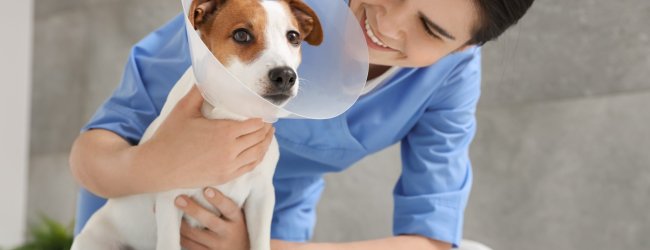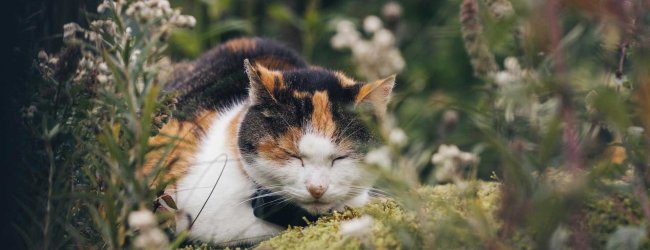Cat Twitching in Sleep: Is It Normal or Something More?
While most cats twitch in their sleep, you also want to avoid missing out on the signs of something more serious. Here's why it happens.
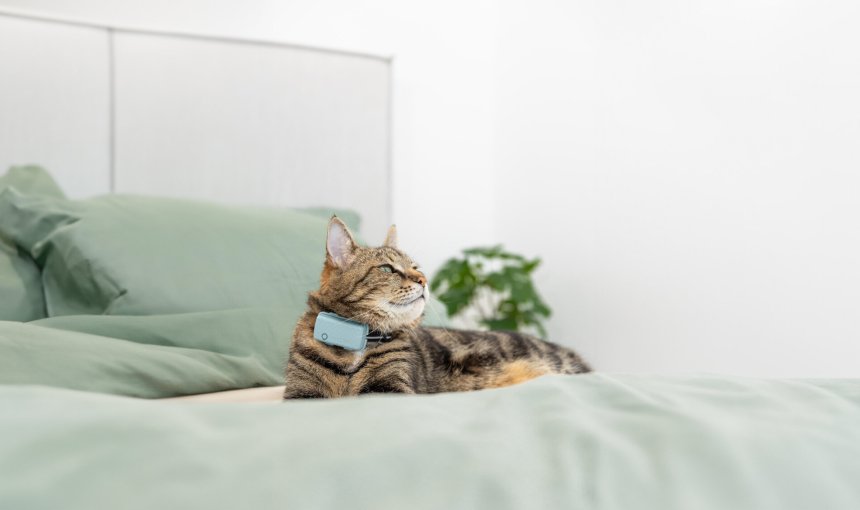
Ever watched your cat snoozing peacefully, only to see them suddenly twitch, jerk, or even make little noises? If you’ve found yourself wondering, “Why do cats twitch in their sleep?”, you’re definitely not alone. It’s a common observation that can leave many cat parents a little puzzled, and sometimes, a bit worried. Here’s why it happens and where a smart cat collar with Sleep Tracking can help you figure out if it’s something more serious.
Key Takeaways
Most cat twitch during sleep and it’s a normal part of their REM sleep cycle. It often indicates that they’re dreaming.
While normal twitches are subtle and brief, seizures are more intense, prolonged, and can involve disorientation or full-body convulsions.
Head to your vet if twitching occurs while awake, is severe, prolonged, or accompanied by other concerning symptoms like disorientation or loss of bodily control.
A smart cat collar with Sleep Tracking – like Tractive – can help you monitor changes in your cat’s sleep patterns, helping you spot potential health issues early.

Find out where your cat spends their time.
Read moreWhy do cats twitch in their sleep?
Just like humans, cats go through different sleep stages, including periods of deep sleep and REM (Rapid Eye Movement) sleep. This is where most of the twitching action happens!
1. REM Sleep: The dream stage
This is the most common and usually harmless reason for a cat twitching in sleep. During REM sleep, cats are often dreaming. What do cats dream about? Probably chasing mice, pouncing on toys, or perhaps even enjoying a delicious meal. When they’re dreaming, their brains are highly active, and this can translate into physical movements like:
- Paw twitches, as if they’re running or pouncing.
- Ear flicking, responding to sounds in their dream.
- Whisker movements, mimicking sniffing or exploring.
- Tail flicks, like they’re stalking prey.
- Soft vocalizations, little chirps, meows, or growls.
These small, involuntary movements are a completely normal and healthy part of their sleep cycle. It’s a sign they’re getting good, deep rest.
2. Muscle relaxation and spasms
As cats drift into deeper sleep, their muscles relax. Sometimes, this relaxation can lead to minor muscle spasms or jerks, similar to the hypnic jerks humans experience as they fall asleep. These are usually isolated, quick movements and nothing to worry about.
3. Growth and development (especially for kittens)
Kittens, much like human babies, spend a lot of time sleeping. So you might notice them twitching even more frequently than adult cats. This is often because they’re growing and is a completely normal part of their development. Their nervous systems are still maturing, and these twitches can be a part of that process.
💡A smart cat collar with Sleep Tracking can help you figure out what’s a normal amount of sleep for your cat – and if there’s a weird change in their sleep cycles. So you can bring them over to a vet for a checkup that much quicker.
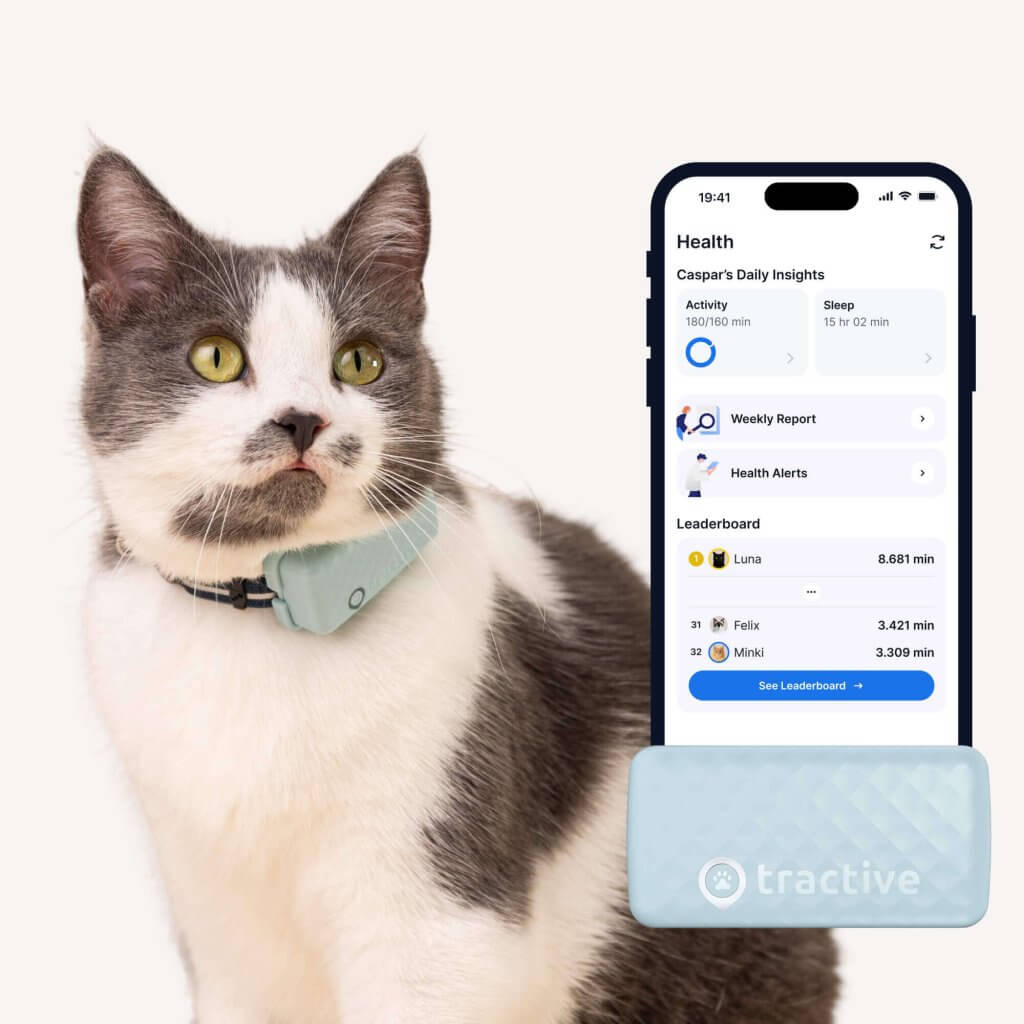
Get health alerts for your cat
Our cats can’t always tell us if something’s wrong. But if their tracker detects unusual changes in their routine, you’ll get an alert, helping you catch potential issues early.
When your cat’s twitching might be a sign of a health issue
While most sleep twitching is benign, it’s important to differentiate between normal sleep movements and something more concerning, like seizures or other medical conditions. Look out for:
- Intensity and duration
Normal sleep twitches are usually small, brief, and isolated. Seizures, on the other hand, tend to be more intense, prolonged, and involve larger muscle groups. - Consciousness
During a normal sleep twitch, your cat is still deeply asleep and will likely remain unresponsive if you try to wake them. During a seizure, a cat might appear disoriented, unresponsive, or even lose consciousness. - Post-twitch behavior
After a normal sleep twitch, your cat will simply continue sleeping or wake up normally. After a seizure, a cat might be disoriented, confused, lethargic, or even temporarily blind. They might also drool excessively or urinate/defecate involuntarily. - Body stiffness/rigidity
Seizures can involve periods of muscle rigidity or uncontrolled, rhythmic jerking movements of the entire body. - Twitching while awake
This is a more immediate cause for concern and warrants a vet visit. It could indicate pain, neurological issues, anxiety, or other medical problems.
Should I wake up my cat if they’re twitching while asleep?
Generally, no. If your cat is simply twitching during sleep, it’s likely they are in a deep stage of sleep (REM sleep) and dreaming. Waking them up from this deep sleep can be startling and disorienting for them. It’s best to let them continue their sleep uninterrupted, as it’s crucial for their overall health and well-being.
However, if you suspect the twitching could be a seizure, then it’s important to prioritize their safety. In such cases, gently try to get their attention, but avoid putting your hands near their mouth, as they might inadvertently bite. Focus on keeping them safe from injury and contact your vet immediately.
Cat twitching in sleep – or a seizure?
It can be tough to tell the difference, but here’s a quick comparison to help you distinguish between normal sleep twitching and a potential seizure:
| Normal sleep twitching | Seizure |
|---|---|
| Subtle, brief, isolated movements (paws, ears, whiskers, tail) | Intense, prolonged, full-body convulsions or rigidity |
| Cat remains deeply asleep and unresponsive to attempts to wake them | Cat may appear disoriented, unresponsive, or lose consciousness |
| Cat wakes up normally or continues sleeping afterwards | Cat may be disoriented, confused, lethargic, or temporarily blind after the episode |
| No excessive drooling, urination, or defecation | Excessive drooling, urination, or defecation may occur |
| Only occurs during sleep | Can occur while awake or asleep |
When to head to the vet
Drop by for a checkup right away if you notice that:
- The twitching seems more like a full-body convulsion or seizure.
- The movements are prolonged (lasting more than a minute or two).
- Your cat appears disoriented, confused, or unresponsive after the twitching episode.
- There’s excessive drooling, urination, or defecation during or after the episode.
- The twitching occurs while your cat is awake and alert.
- The twitching episodes are becoming more frequent or severe.
- You notice other concerning symptoms alongside the twitching, such as lethargy, loss of appetite, vomiting, or changes in behavior.
These could be signs of neurological disorders, epilepsy, kidney disease, toxin exposure, or other serious health conditions that require professional diagnosis and treatment.
Where a smart cat collar with Sleep Tracking can step in
A change in your cat’s sleep cycles can also be a sign of cognitive decline, especially in senior cats. These changes, even subtle ones, can be early indicators of discomfort, pain, stress, or the onset of a medical condition. And while monitoring your cat’s sleep isn’t the easiest – that’s where technology can lend a hand. Aka, a smart cat collar with built-in Health Monitoring and Sleep Tracking.
Strapped to your cat’s collar, you can now:
- Monitor your cat’s activity and sleep
With its built-in motion detector, your trusty Tractive device helps you figure out how often your cat has been on the move (from their active minutes) or on the snooze (from their sleep minutes.) - Figure out what’s a normal amount of sleep for your cat
Your tracker also establishes a baseline of your cat’s normal sleep patterns, including how much deep sleep, light sleep, and active sleep they get. - Pick up on a change in your cat’s sleep cycles early
If there’s a significant change in your cat’s sleep cycles or sleep quality, your tracker sends you a Health Alert. For example, a sudden increase in restless sleep, a decrease in deep sleep, or unusual activity during sleep that deviates from their norm.
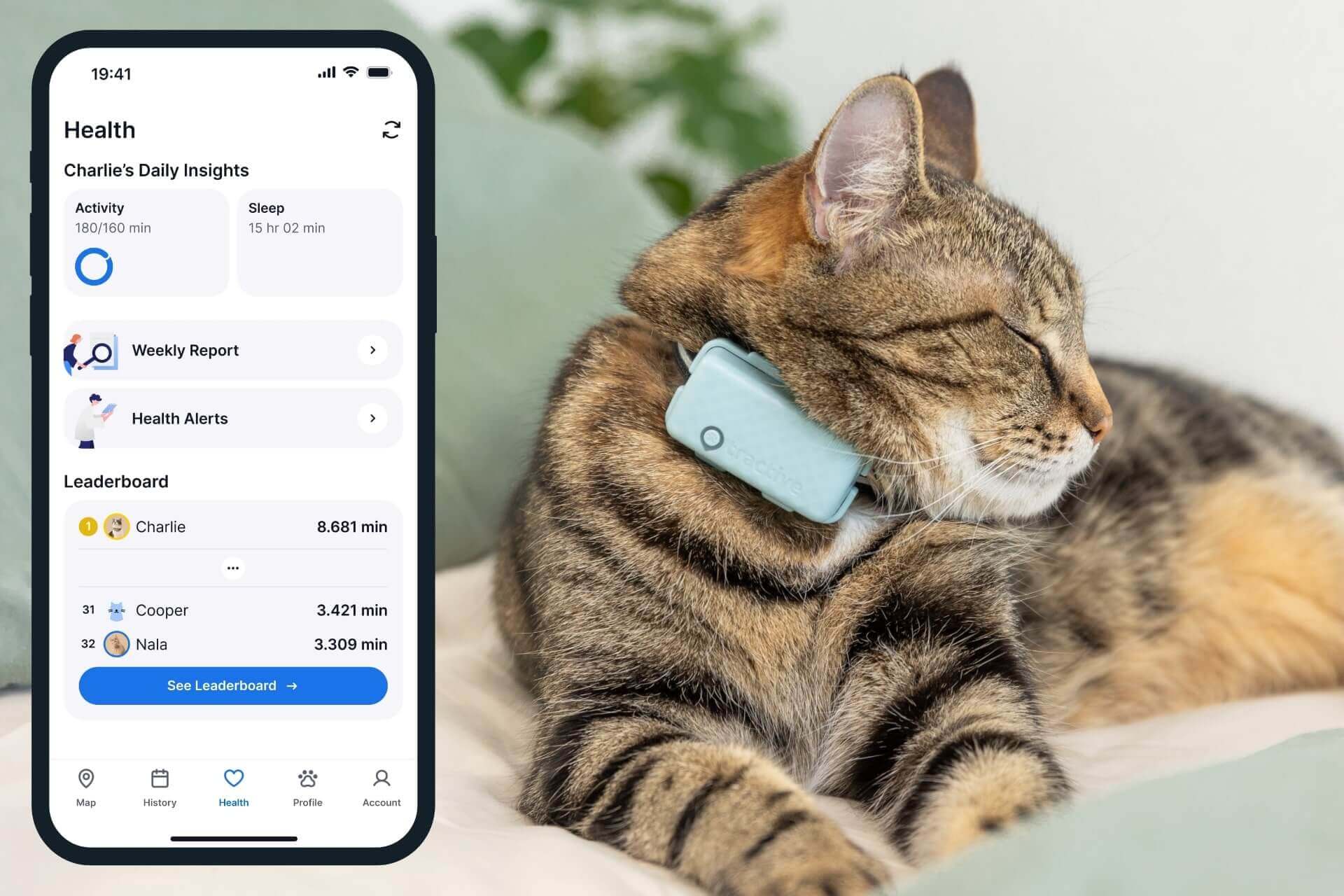
With this data at hand, you’re more likely to have a productive conversation with your vet – and help them diagnose your cat that much easier.
Most of the time, when you see your cat twitching in sleep, it’s just them having a dream. It’s a sign of a well-rested, happy kitty. However, being an observant cat parent means knowing the difference between normal behavior and a potential red flag. Pay attention to the nature of the twitches, your cat’s overall behavior, and don’t hesitate to consult your vet if you have any concerns.
And if you’ve liked this post, share it with a friend or a loved one – and let’s help build a safer, kinder world for our furry friends together.
